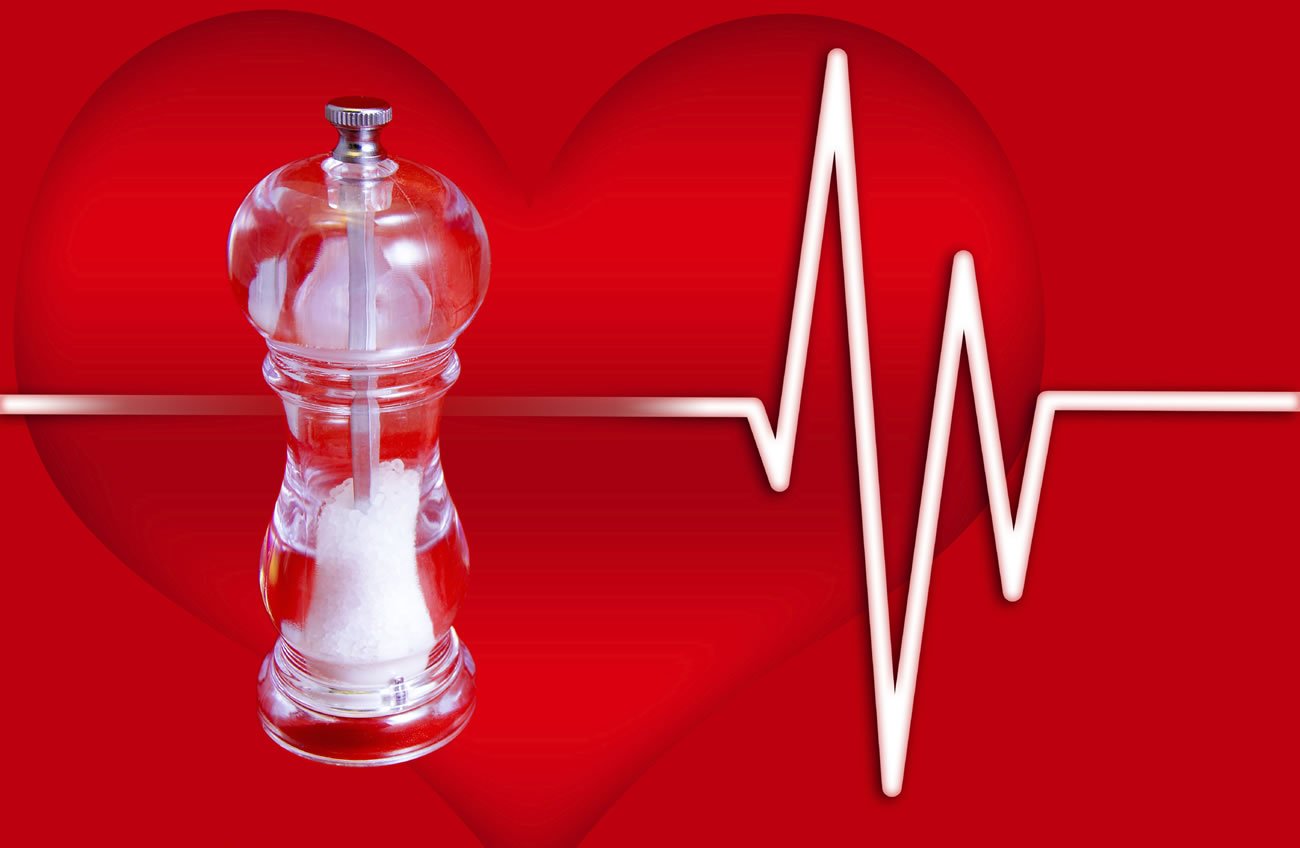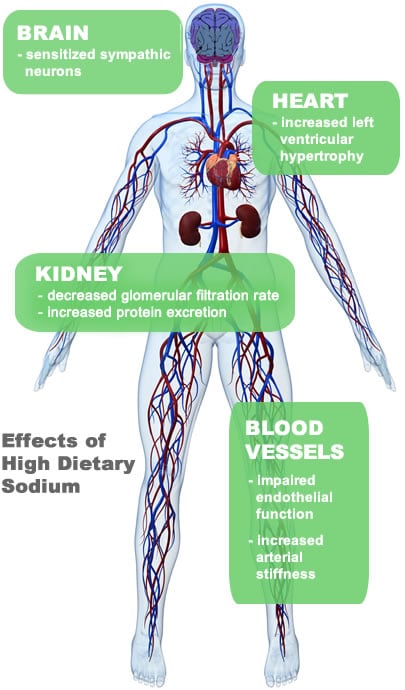The Dangers of Salt:
It’s More Than Just a Blood Pressure Problem
In a recent comprehensive review in the Journal of the American College of Cardiology, the authors concluded that even in the absence of an increase in blood pressure, consuming a salt-rich diet can cause many other problems for the human body.

In a review article in the Journal of the American College of Cardiology,1 the authors concluded that “even in the absence of an increase in blood pressure, excess dietary sodium can adversely affect target organs, including the blood vessels, heart, kidneys and brain.”
The scientists, led by William Farquhar, PhD, of the University of Delaware, point out that most Americans need a mere 500 milligrams (mg) of sodium daily for “fluid balance… and a stable internal environment.”
But unfortunately, most of us consume far more – about six times as much, or 3,200 mg of sodium daily. This is more than double the 1,500 mg maximum per day recommended by health organizations like the American Heart Association. For more than five decades, a maximum of 1,500 mg of sodium daily has also been the recommendation of the Pritikin Eating Plan.
Dangers of Salt | Blood Vessels
Elevated sodium levels can negatively affect the function of the inner lining of the blood vessels, called the endothelium, report Dr. Farquhar and colleagues.
And the last thing we want to do is foul up our endothelium.
As Bruce Albert, MD, and co-authors wrote in their classic, in-depth textbook on cell biology, Molecular Biology of the Cell, “Almost all tissues depend on a blood supply, and the blood supply depends on endothelial cells.”2
The endothelium introduces all kinds of chemicals, like nitric oxide, which control how well our blood vessels expand and contract. Put simply, we want blood vessels with good elasticity; without it, they can’t stretch well with each pulse. They stiffen, making it harder for the heart to pump blood throughout the body. Eventually, the heart wears out. It’s called heart failure.

One of the endothelium’s other key jobs is releasing factors that cut down on platelet stickiness, which helps ensure that our red blood cells flow smoothly, like traffic on an unclogged freeway.
When the endothelium is malfunctioning, the result of too much salt as well as other lifestyle-related factors like high insulin levels, high LDL (bad) cholesterol, and high blood glucose, it becomes a breeding ground for inflammation, cholesterol plaque build-up, and cardiovascular diseases.
Dangers of Salt | Heart
High blood pressure is a major risk factor for left ventricular hypertrophy, which is enlargement of the muscle tissue that makes up the wall of the heart’s main pumping chamber.
But research has found that high sodium intake may increase left ventricular wall thickness independent of high blood pressure. For example, in a study of healthy adults with normal blood pressure or minimal hypertension, those with the highest sodium excretion had significantly greater diagnoses of left ventricular hypertrophy.3
Having left ventricular hypertrophy can lead to multiple heart-related problems, including arrhythmia (abnormal heart rhythm), heart attack, sudden cardiac arrest (sudden loss of heart function), and heart failure (inability of the heart to pump enough blood throughout the body).
Dangers of Salt | Kidneys
One of the ways doctors assess how well our kidneys are working is with a test called glomerular filtration rate. Glomeruli are tiny sieves in the kidneys that filter waste from the blood. The higher our glomerular filtration rate, the better our kidneys are at getting rid of waste.
Studies have found that a high salt intake, even with only a minimal rise in blood pressure, can lead to decreased rates of glomerular filtration, which are a sign of chronic kidney disease, and, if not checked, kidney failure.4
And certainly, many of us have developed a serious craving for salted foods and find low-salt or salt-free versions unappetizingly bland. That’s why “detox” vacations, like the one- and two-week stays at Pritikin, are so valuable.
At Pritikin, renowned for its success in educating tens of thousands worldwide to live healthier lives, people learn after just a few days, and often to their surprise, that their taste buds actually open up to the pleasures of natural, whole foods unadultered with a lot of salt. In fact, “guests start preferring the food we serve at Pritikin over the salt-saturated foods they used to like,” notes Kimberly Gomer, MS, RD, Pritikin’s Director of Nutrition.
Affirms frequent Pritikin guest Andrea C of Tampa, Florida: “Delicious food, a beautiful atmosphere, the education, the amazing staff… It’s a little bit of heaven for a week or two, and the bonus is, you lose weight.”
Bottom Line: At the Pritikin Longevity Center, you give up salt, but what you gain is so much more.
It’s actually a win-win: Your meals are a joy without added salt, and your body is healthier, too.